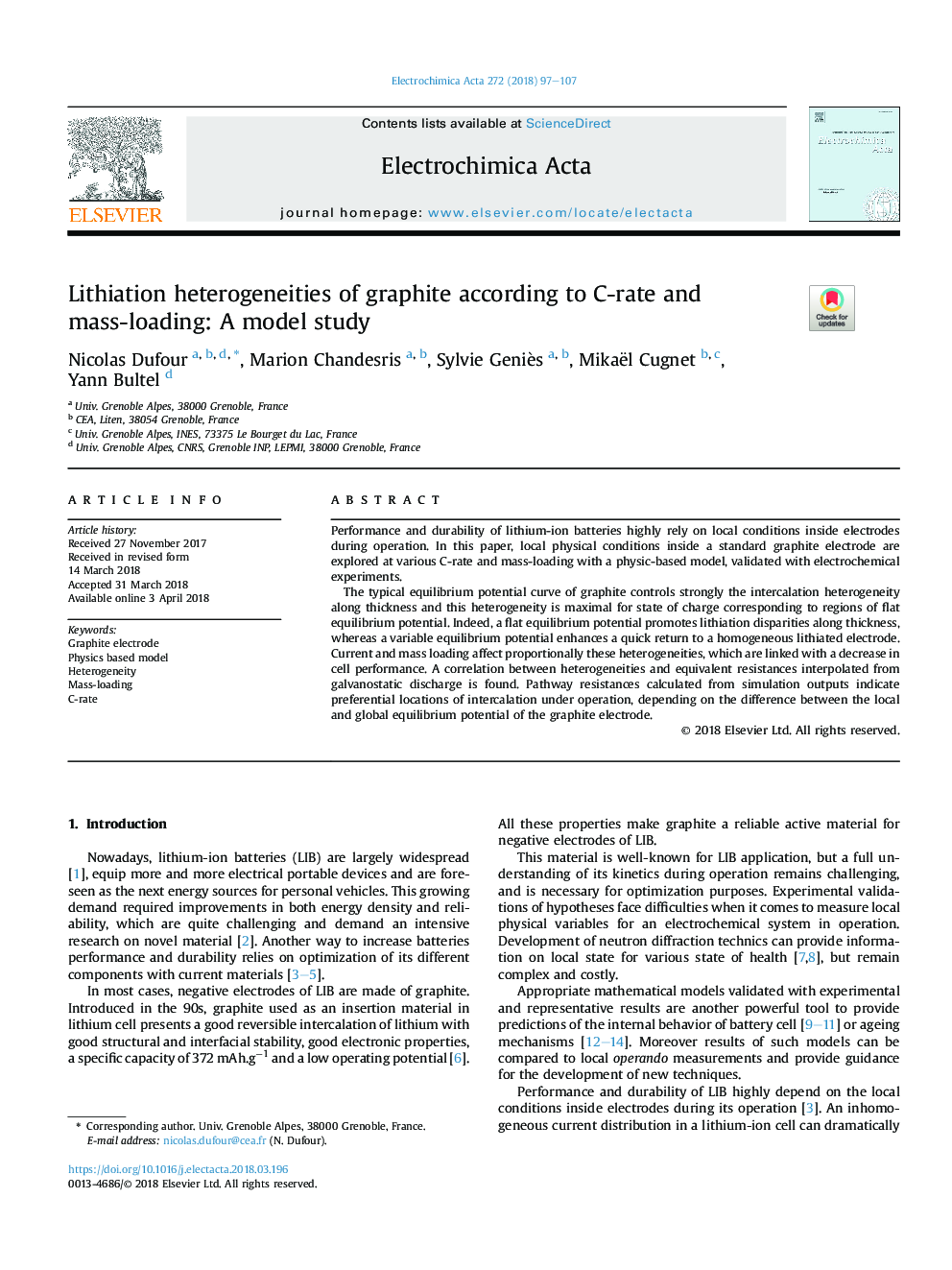| Article ID | Journal | Published Year | Pages | File Type |
|---|---|---|---|---|
| 6603141 | Electrochimica Acta | 2018 | 11 Pages |
Abstract
The typical equilibrium potential curve of graphite controls strongly the intercalation heterogeneity along thickness and this heterogeneity is maximal for state of charge corresponding to regions of flat equilibrium potential. Indeed, a flat equilibrium potential promotes lithiation disparities along thickness, whereas a variable equilibrium potential enhances a quick return to a homogeneous lithiated electrode. Current and mass loading affect proportionally these heterogeneities, which are linked with a decrease in cell performance. A correlation between heterogeneities and equivalent resistances interpolated from galvanostatic discharge is found. Pathway resistances calculated from simulation outputs indicate preferential locations of intercalation under operation, depending on the difference between the local and global equilibrium potential of the graphite electrode.
Related Topics
Physical Sciences and Engineering
Chemical Engineering
Chemical Engineering (General)
Authors
Nicolas Dufour, Marion Chandesris, Sylvie Geniès, Mikaël Cugnet, Yann Bultel,
